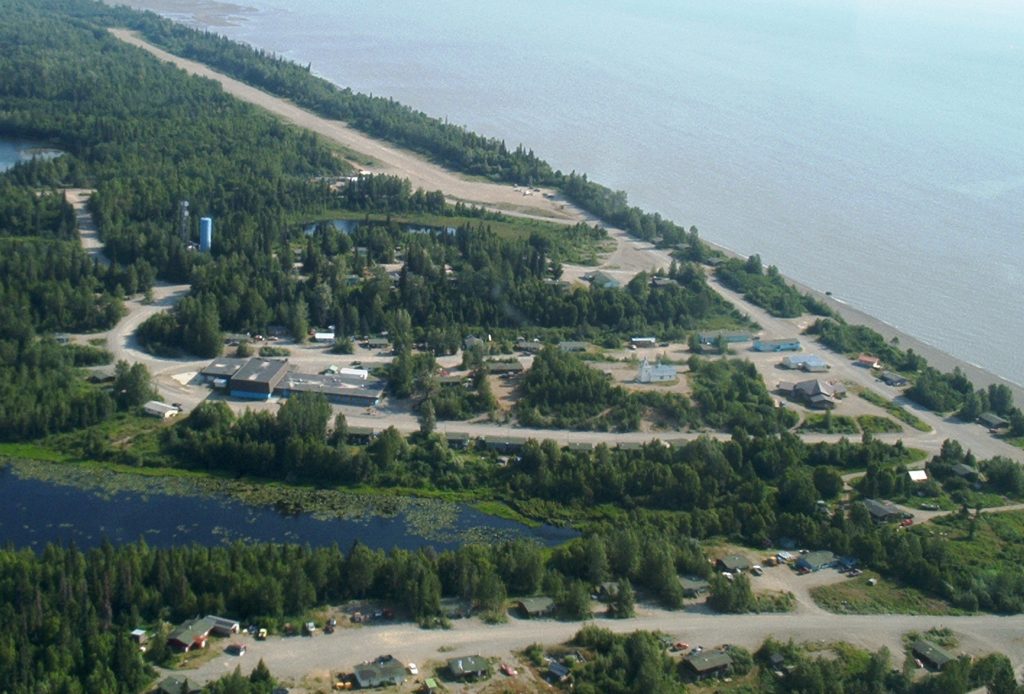About Us
Strengthening Our Tribal and Community Institutions
About Tyonek and the Tebughna Foundation

About Tyonek
Tyonek, located on the northern shore of Tikhatnu (the Cook Inlet), is on the traditional territory of the Dena’ina Athabascan people. We are Tebughna – Dena’ina for “the beach people”. For time immemorial, the people of Tyonek have embraced a rich traditional culture of subsistence, song, dance, storytelling, and spirituality. Hunting, trapping, fishing, and whaling has sustained the people of Tyonek to the present day. Tyonek has seen many changes over the years.
In the 18th century, the Russians began to settle the southern coast of Alaska to harvest furs. Russian trading settlements were established at “Tuiunuk” but were destroyed in conflicts between the Natives and the Russians. Russian Orthodox missionaries gained a foothold in the region. In 1778, Captain James Cook sailed up Tikahtnu, which now bears his name. His journal provides a description of the Athabascans, who possessed iron knives and glass beads. Between 1836 and 1840, half of the region’s Native people had died from a smallpox epidemic.
In 1867, the Alaska Territory was purchased by the United States. After gold was discovered at Resurrection Creek in the 1880s, Tyonek became a major port for goods and people. In 1915, the Tyonek Reservation (also known as the Moquawkie Indian Reservation) was established. The influenza epidemic of 1918-1919 devastated Native communities in the region. Shortly thereafter, measles, tuberculosis and other diseases wiped out entire villages. In 1934, the last chief of Tyonek, Simeon Chickalusion, rescued the surviving villagers in Susitna Station, including master storyteller Shem Pete, by boat and relocated them to Tyonek.
The Native Village of Tyonek (NVT) was organized in 1939 under the Indian Reorganization Act. NVT remains the tribal government for the community of Tyonek and is led by the tribal council. In 1962, oil and gas deposits were discovered in the Cook Inlet. In 1968, Tyonek Tribal Council President Albert S. Kaloa Jr. used the village’s wealth from oil sales to finance the organization and meetings of the fledgling Alaska Federation of Natives. AFN went on to spearhead the passage of the Alaska Native Claims Settlement Act (ANCSA) of 1971. In 1973, under ANCSA, Tyonek formed Tyonek Native Corporation (TNC).
Tebughna Foundation was founded in 2007 to provide scholarships. Since then our work has expanded to include Dena’ina language revitalization, cultural events and community programs, and community development.
About Tebughna Foundation
Our Mission: To preserve and perpetuate the Tebughna Dena’ina traditions by funding cultural enhancements and educational opportunities for the benefit of Tyonek Native Corporation shareholders and the Native Village of Tyonek Tribal citizens.
Our Vision: To honor our ancestors, our elders, and our traditions; to commit a share of our lifelong activities toward the enrichment of our culture; to invest in our future and our children in order preserve our values.
Our Core Values
Tebughna: Our land, our tribe, our people.
Tradition: Acknowledging our elders and our culture.
Pride: Among our people to honor our way.
Good Health: With sobriety and spirituality.
Trust: Building healthy relationships.
Leadership: Through education and example.
Knowledge: Passing on Tebughna wisdom to our youth.
Acknowledgements
Through generous contributions from Tyonek Native Corporation, and donations from partner organizations and individuals, TF is able to continue its mission to provide funding for scholarships, Dena’ina language and culture programs, and community development. With your support, we are able to keep a positive outlook on the future. We are heartened by the successes of TNC shareholders and NVT tribal citizens.
To all those who continue support the Tebughna Foundation, “Chiqinik” (Thank You).
